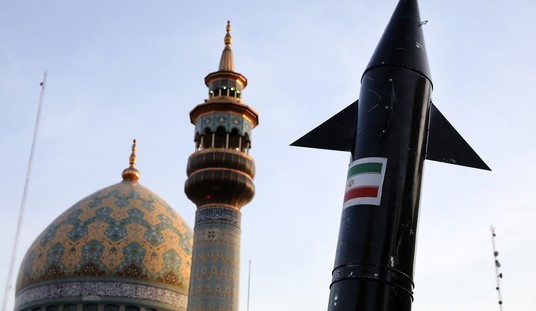During his October 6, 2013 speech at Bar Ilan University, Israel’s Prime Minister Benjamin Netanyahu alluded to the ex-Mufti of Jerusalem, Hajj Amin el-Husseini. Mr. Netanyahu characterized el-Husseini as, “the undisputed leader of the Palestinian national movement in the first half of the 20th century.” The Prime Minister highlighted the ex-Muft’s role in fomenting pogroms (dating back, in fact, to the so-called “Nabi Musa” riots of 1920) during the decades between the Balfour Declaration, and the eventual creation of the State of Israel in 1948.
Netanyahu’s address also focused on el-Husseini’s World War II era collaboration with the Nazis, the clear implication being that the Mufti’s murderous, Jew-hating ideology was simply another manifestation of Nazi evil, transplanted to a local “nationalistic struggle” in the Middle East. I have just published an extensive analysis (available as a downloadable pdf of 51 pp., and 120 references, embedded at the end of this blog) entitled, “A Salient Example of Hajj Amin el-Husseini’s Canonical Islamic Jew-Hatred—Introduction, Text, and Commentary” which demonstrates that Netanyahu’s rehashing of such conventional, pseudo-academic “wisdom,” does not withstand any serious, objective scrutiny.
On June 30, 1922, a joint resolution of both Houses of Congress of the United States unanimously endorsed the “Mandate for Palestine,” confirming the irrevocable right of Jews to settle in the area of Palestine—anywhere between the Jordan River and the Mediterranean Sea. The Congressional record contains a statement of support from New York Rep. Walter Chandler which includes an observation, about “Turkish and Arab agitators . . . preaching a kind of holy war [jihad] against . . . the Jews” of Palestine. During this same era within Palestine, a strong Arab Muslim irredentist current—epitomized by Hajj Amin el-Husseini—promulgated the forcible restoration of sharia-mandated dhimmitude for Jews via jihad. Indeed, two years before he orchestrated the murderous anti-Jewish riots of 1920, that is, in 1918, Hajj Amin el-Husseini stated plainly to a Jewish coworker (at the Jerusalem Governorate), I. A. Abbady, “This was and will remain an Arab land . . . the Zionists will be massacred to the last man. . . . Nothing but the sword will decide the future of this country.”
Despite his role in fomenting the1920 pogroms against Palestinian Jews, el-Husseini was pardoned and subsequently appointed mufti of Jerusalem by the British high commissioner, in May 1921, a title he retained, following the Ottoman practice, for the remainder of his life. Throughout his public career, the mufti relied upon traditional Koranic anti-Jewish motifs to arouse the Arab street. For example, during the incitement which led to the 1929 Arab revolt in Palestine, he called for combating and slaughtering “the Jews.” not merely Zionists. In fact, most of the Jewish victims of the 1929 Arab revolt were Jews from the centuries-old dhimmi communities (for example, in Hebron), as opposed to recent settlers identified with the Zionist movement.
The mufti remained unrelenting in his espousal of a virulent, canonical Islamic Jew-hatred as the focal tenet of his ideology, before, during, and in the aftermath of World War II, and the creation of the State of Israel. He was also a committed supporter of global jihad movements, urging a “full struggle” against the Hindus of India (as well as the Jews of Israel) before delegates at the February 1951 World Muslim Congress: “We shall meet next with sword in hand on the soil of either Kashmir or Palestine.” Declassified intelligence documents from 1942, 1947, 1952, and 1954 confirm the mufti’s own Caliphate desires in repeated references from contexts as diverse as Turkey, Egypt, Jerusalem, and Pakistan, and also include discussions of major Islamic conferences dominated by the mufti, which were attended by a broad spectrum of Muslim leaders literally representing the entire Islamic world (including Shia leaders from Iran), that is, in Karachi from February 16–19, 1952, and Jordanian-occupied Jerusalem, December 3–9, 1953. Viewed in their totality these data do not support the current standard assessment of the mufti as merely a Palestinian Arab nationalist, rife with a “transplanted” Jew-hatred.
There is another parallel negationist trend, which is widely prevalent: the claim that el-Husseini’s canonical Islamic Jew-hatred somehow represented a suis generis “Nazification” of Islam, which has “persisted” into our era. Paul Berman articulated an unabashed formulation of this broadly held thesis, proclaiming, that abetted by the Nazis, el-Husseini “monstrously,” and “infernally,” “blurred Islam and Nazism,” achieving
A victory of Himmler’s Islam…A victory for the Islam of fanaticism and hatred over its arch-rival, the Islam of generosity and civilization.17
During 1938, a booklet Muhammad Sabri edited, Islam, Judentum, Bolschewismus (Islam, Jewry, Bolshevism), was published in Berlin by Junker-Duennhaupt [Dünnhaupt]. Sabri’s booklet included Hajj Amin el-Husseini’s 1937 declaration—also deemed by some as a “fatwa” (an Islamic religious ruling)—appealing to the worldwide Muslim umma. El-Husseini’s declaration was extracted and reprinted, separately, by the Nazi regime as Islam und Judentum (Islam and Jewry), and distributed to Muslim SS units in Bosnia, Croatia, and the Soviet Union.
As best as I can determine, the first complete, annotated translation of this pamphlet, directly from the German, was provided in my essay. Moreover, no scholar had ever identified, let alone comprehensively explicated, the antisemitic Islamic motifs which punctuate el-Husseini’s pronouncement, from beginning to end. Accordingly, the translation was followed by a detailed commentary which addressed this critical (and frankly, self-fulfilling) lacuna in the scholarship on el-Husseini’s Jew-hatred: identifying and analyzing its traditionalist Islamic origins.
What follows is the crux of my analysis, but to fully understand its arguments requires a careful reading of all the evidence adduced in the original essay.
Just before his concluding admonition for a jihad to annihilate the Jewish community of historical Palestine, Hajj Amin el-Husseini recapitulates the dominant thematic narrative, woven together from a myriad of specific, canonical Islamic motifs, throughout the 1937 proclamation:
[T]he Arabs have learned best how they really are, that is, as they [the Jews] are described in the Koran and in the sacred scriptures… The verses from the Koran and hadith prove to you that the Jews have been the bitterest enemies of Islam and continue to try to destroy it.
El-Husseini’s own apt summary assessment of the proclamation raises basic, important questions for those, in particular, who expound the view that his Islam was a form of modern “ideological chimerism,” spatchcocked from “fundamentalist elements” of the Muslim creed, engrafted, fiendishly, to Nazism. What did attentive, full tallies, comparing the numbers of Islamic and non-Islamic motifs cited by El-Husseini, demonstrate? Specifically, regarding the latter, what examples (if any), derived from Hitler’s Mein Kampf, or the writings of Nazi racial theorists were presented? Did invocations of the Czarist Russian era forgery, The Protocols of the Elders of Zion, accompany, or complement these references to Nazi ideology? Was there any evidence that central themes from European Christian antisemitism were invoked, to confirm Paul Berman’s fulmination about how “Nazified Islam” strove to demonstrate “that European and Christian superstitions ought to be regarded as authentically Middle Eastern and Islamic”?
What in fact could be readily gleaned from a careful, objective reading of el-Husseini’s proclamation was there were no concrete, substantive references to any of these major non-Islamic sources of antisemitism. This absence of references contrasted starkly with the numerous and specific antisemitic motifs from Islam’s canonical texts—the Koran (consistent with its gloss in authoritative Koranic commentaries), hadith, and sira—which el-Husseini’s declaration invoked continuously, from opening to closing.
A simple enumeration conveyed el-Husseini’s extensive use of references from Islam’s canonical texts: ten explicit references to Koranic motifs (including eleven separate verses quoted directly in the proclamation), with an additional six implicit references; two explicit citations of the sira, and five implicit references; and two major, explicit citations (with quotation) of hadith, accompanied by three additional implicit references to the hadith literature. These citations are complemented by an explicit reference to the great early Muslim scholar al-Tabari (d. 923), and his monumental History.
Moshe Perlmann, an eminent scholar of Islam’s Medieval era anti-Jewish polemical literature, made this rueful summary observation in 1964:
The Koran, of course became a mine of anti-Jewish passages. The hadith did not lag behind. Popular preachers used and embellished such material.
The numerous salient examples of Islam’s canonical Jew-hatred punctuating Hajj Amin el-Husseini’s 1937 declaration validated Perlmann’s concise overarching assessment of these foundational Islamic sources, and their tragic application across space and time, into the modern era.
El-Husseini’s promulgation of jihad and canonical Islamic Jew-hatred in pursuit of the destruction of Palestinian Jewry, and later, the nascent Jewish State of Israel, has reverberated across the ensuing decades. Consider two complementary fatwas, one written January 5, 1956, by then grand mufti of Egypt, Sheikh Hasan Ma’moun, and another January 9, 1956, signed by the leading members of the Fatwa Committee of Al Azhar University—Sunni Islam’s Vatican—and the major representatives of all four Sunni Islamic schools of jurisprudence. These rulings elaborated the following key initial point: that all of historical Palestine—modern Jordan, Israel, and the disputed territories of Judea and Samaria, as well as Gaza—having been conquered by jihad, was a permanent possession of the global Muslim umma (community), “fay territory”—booty or spoils—to be governed eternally by Islamic law.
Muslims cannot conclude peace with those Jews who have usurped the territory of Palestine and attacked its people and their property in any manner which allows the Jews to continue as a state in that sacred Muslim territory. [As] Jews have taken a part of Palestine and there established their non-Islamic government and have also evacuated from that part most of its Muslim inhabitants. . . . Jihad . . . to restore the country to its people . . . is the duty of all Muslims, not just those who can undertake it. And since all Islamic countries constitute the abode of every Muslim, the Jihad is imperative for both the Muslims inhabiting the territory attacked, and Muslims everywhere else because even though some sections have not been attacked directly, the attack nevertheless took place on a part of the Muslim territory which is a legitimate residence for any Muslim… Everyone knows that from the early days of Islam to the present day the Jews have been plotting against Islam and Muslims and the Islamic homeland. They do not propose to be content with the attack they made on Palestine and Al Aqsa Mosque, but they plan for the possession of all Islamic territories from the Nile to the Euphrates.
Although free of eschatological references, the January 1956 Al Azhar fatwas’ language and arguments—pronounced from Sunni Islam’s most esteemed religious teaching institution—are otherwise indistinguishable from those employed just over three decades later by Hamas (in its 1988 covenant), revealing the same conjoined motivations of jihad, and conspiratorial Islamic Jew-hatred.
Recent polling data indicate that these traditionalist Islamic views—espoused across a continuum of 75 years by el-Husseini, Al Azhar University, and Hamas—resonate with the Palestinian Muslim population. American pollster Stanley Greenberg performed what was described as an “intensive, face-to-face survey in Arabic of 1,010 Palestinian adults in the West Bank and the Gaza Strip.” As reported in July, 2011 these data revealed that seventy-three percent of Palestinian Muslims agreed with the dictates of the apocalyptic hadith (Sahih Muslim, Book 41, Number 6985; included in both el-Husseini’s 1937 declaration, and the 1988 Hamas Covenant) calling for the annihilation of the Jews, to bring on the messianic age. Eighty percent supported the destruction of Israel by jihad, and the need to recruit the entire global Muslim community, or “umma” in this quintessential Islamic cause. 119
Almost four decades ago Bat Ye’or published a remarkably insightful analysis of contemporary Islamic Jew-hatred, in particular, its annihilationist predilection. She hypothesized that the rise of Jewish nationalism—Zionism—posed a predictable, if completely unacceptable challenge to the Islamic order—jihad-imposed chronic dhimmitude for Jews—of apocalyptic magnitude.
The pejorative characteristics of Jews as they are described in Muslim religious texts are applied to modern Jews. Anti-Judaism and anti-Zionism are equivalent—due to the inferior status of Jews in Islam, and because divine will dooms Jews to wandering and misery, the Jewish state appears to Muslims as an unbearable affront and a sin against Allah. Therefore it must be destroyed by Jihad. Here the Pan-Arab and anti-Western theses that consider Israel as an advanced instrument of the West in the Islamic world, come to reinforce religious anti-Judaism.
Bat Ye’or’s 1974 observations have now been confirmed by the first thorough textual analysis of the exclusively Islamic sources utilized in a critically important 1937 pronouncement by Hajj Amin el-Husseini. One can only speculate as to why such an investigation was not conducted decades earlier.








Join the conversation as a VIP Member